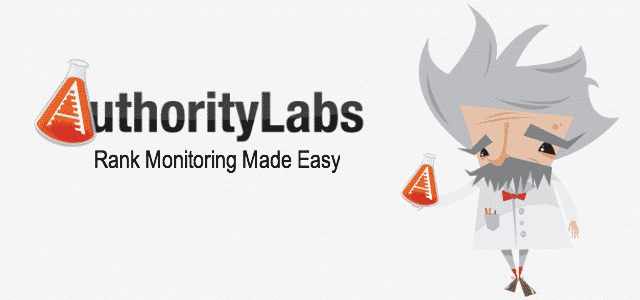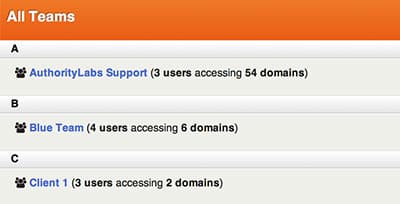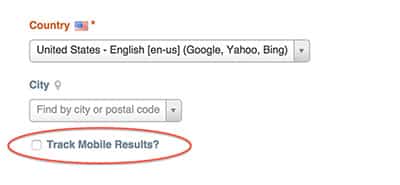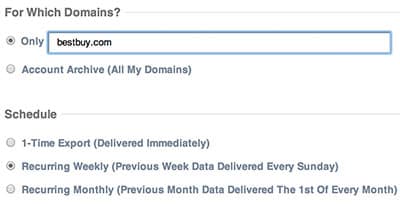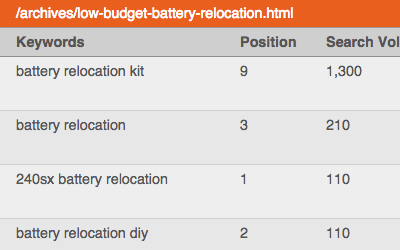
Contests are a great way for businesses to increase engagement and gain leads. Hosting one on social media is even better. With so many ways to engage, share, and make your contest viral, social media is the perfect place to host your next contest. Follow the tips below and you will be on your way to a successful social media contest!
Choose a Primary Network to Host the Contest With
It’s important to avoid confusion as much as possible when hosting a contest on social media. One way to avoid chaos and having to answer several of the same questions is by hosting the contest on one social network. Promoting the contest across all networks is recommended, and necessary for a successful contest, as long as it doesn’t require users to enter on each network. Additional entires for sharing on additional networks is a plus, but shouldn’t be one of the required steps.
I like to host contests for my clients on their Facebook page using third party apps. Facebook is usually a client’s most engaged social network and has great options for paid promotion. Once the contest is setup and paid promotion has begun on Facebook, I’ll share the contest and it’s details on the client’s other networks: Twitter, Pinterest, Instagram, etc. The other networks help spread the word while increasing entries using their other fanbase.
Choose What Part of the Contest to Share on Which Network
As we discussed above, just because a contest is hosted on one network, doesn’t mean it can’t be shared on others. For example, Pinterest and Instagram are the best networks to share captivating contest images with short image descriptions, usually informing users how to enter and what the prize is. Use image tools like
Picmonkey to easily add text over contest images, either explaining steps, the contest title/prize, or how to enter.
Twitter is a great opportunity to share a quick update on how many entries you’ve received so far and how many days left to enter. A contest hashtag is a must. Each tweet, and pretty much every social post, has to include the contest hashtag so users can easily follow along.
Regardless of where you are sharing details, make sure to maintain branding and similarity in all of the images and copy you use. With so many contests posted daily on social networks, you want your contest to stand out from the rest, while being known with it’s brand.

Choose a Third Party App
A third party app is going to be the easiest,
and smoothest, way to run a contest on social media. Create different contest tabs on a client’s Facebook Page using tools like Woobox and Rafflecopter. You can also direct traffic from social networks to a specific landing page using a third party app that collects and organizes entries. Some apps will even choose the winner for you by the amount of entry points per person or at random. These third party apps are some of the most commonly contest apps:
Woobox,
Rafflecopter,
Votigo,
Wildfire App,
PromoSimple and
Giveaway Tool.

Create Simple Steps to Follow
The steps to a contest give direction and fluidity to how a person can enter. A photo or video contest will have minimal steps:
- Take a photo/video
- Hashtag it #contesthashtag
- Share it!
Having too many steps in a contest immediately discourages users and shouts “Too much work!”. The least amount of steps you have to enter a contest, the more entries it will receive. Over and over again I’ll see contests on Instagram that have too many steps, or overly complicated steps, for a social network that strives on the two simple acts of “tapping” and “tagging”.
- Like these 5 Instagram users
- Re-post this image
- Hashtag #awesomecontest on the images
- Tag 4 friends you want to bring with you
Simplify and clarify your steps. It will increase the contest and brand visibility while gaining more entries than you know what to do with. Keep It Simple, Stupid.
Clarify Any Required Rules and Legalities
Rules are different then steps, and very important to contests and their host. Rules set boundaries that protect the company throwing the contest, as well as give users a full understanding of what to expect. The rules to a contest should also be simple and easily understood.
To protect yourself,
and the client, you’ll want to include a set of legalities in the rules section. Depending upon the clientele and type of contest it may be beneficial to work with a lawyer to develop the official contests’ rules and regulations. The NBA did a great job, most likely with paid legal guidance, to develop
this set of contest rules for the Warriors contest. #Curry

Obey The Social Network’s Rules
Each social network has their own rules to obey. Facebook is a big one.
It’s terms are fairly lengthy, and were recently updated in January. Scroll down to “Section E” to read all of Facebook’s requirements for Promotions, also known as contests or sweepstakes. Other than lawfully being responsible, you must include the official rules, eligibility requirements, and any necessary regulatory approvals if your contest is hosted on Facebook. You also want to release Facebook by each entrant or participant and clarify that Facebook is in no way sponsoring, endorsing, administrating, or caring about your contest.
Other than the basic legality rules, any Facebook Page can host a contest. You just can’t ask for the contest to be shared by users on their personal Timelines for entries. For example, this step would be violating Facebook’s rules:
#4: Share this post on 5 of your friend’s Facebook Timeline for an additional 2 points.
Decide How You’re Going to Choose a Winner Ahead of Time
Running a social media contest can be a little hectic and unorganized at first. Part of creating a seamless experience is by planning everything ahead of time. Deciding who’s going to choose a winner is one of those important steps to conquer prior to the launch. Is the agency going to pick a winner or is the client? Do you want your boss to have a say in it, or just the marketing team? Make it clear in the beginning so once the contest is over the designated person can quickly choose and announce a winner.
Generate Leads From the Contest
Most contests should have some sort of form or required information to submit as part of the rule. This is a great way to add to your contact list and generate leads. These entries may turn into potential customers next week, in a month, or even a year from now, all from one contest ran on social media.
Does Your Demographic Want to Win the Contest?
The main reason for hosting a contest is to get new leads, drive traffic, and increase engagement. In order to achieve those goals, you need to make sure you’re offering something your demographic actually wants.
If your client sells shoes and they host a contest offering a $50 giftcard to Victoria’s Secrets, what are they telling their audience? Not only are they pushing them to go to another store, but a store that doesn’t even sell shoes (well, mostly). The prize needs to have a direct correlation with the brand.
A pair of shoes valued at $50 or a choice of one of the newest sandals from the summer collection would be a more effective prize. Each entry received means that person actually wants to win a new pair of your client’s shoes, they like them. This data can help you launch products in the future based on which contest prizes were the most successful, by which prizes received the most entries.
Tips For Hosting a Contest on Facebook
- Use Facebook Ads. Advertising on Facebook is just about the only way to get your audience to see your posts, especially when it comes to contests on Facebook. Promoted Posts are a great way to increase the contest’s visibility, as well as engagement. Create several posts introducing the contest, and then promote these posts using Facebook Ads to encourage users to enter. Website Clicks is another great Facebook Ad that will push traffic from Facebook to the contest landing page.
- Share entries on the Facebook Page. If you or your client is having an image or video based contest you can share the images and videos you receive on Facebook. This will encourage other users to enter by giving them an idea of what people have done so far, as well as inspire new ideas for entry.
Tips For Hosting a Contest on Instagram
- Encourage hashtags and reposts. The best way to get engagement with a contest on Instagram is by having user engagement. Creating a contest-specific hashtag will give users a feed to follow and track the progress of entries. Reposts increase your potential entry base, while automatically adding additional eyes on the brand.

- Time the Contest Perfectly. Create your contest around upcoming events, holidays, and/or seasons. This adds a fun and unique way to add relevance to a contest and even more hashtags to choose from on Instagram.
Tips For Hosting a Contest on Pinterest
- Send Pinners for a whirl. Work with sponsors of the contest or local business partners to spread the word about the contest by making their Pinterest page one of the steps to enter. This will send users on a hunt from Pinterest page to Pinterest page, meeting allied businesses and Pinners along the way.
- Create a New Pinterest Board for Entries. Encourage users to make their own board sharing images that represent the contest, while using the hashtag on each pin. This alerts their followers of a new board, increasing visibility, and adds additional pins to the hashtag.
Tips For Hosting a Contest on Twitter
- #Contest. Including #contest or #sweepstakes in your contest tweets will improve it’s visibility tremendously. People who regularly enter in #contests check the contest hashtag frequently, scrolling through the feed until they find a contest or prize that relates to them.
- Track the Engagement. Using social media monitoring tools like Sprout Social or SocialBro track how many @ mentions, favorites, retweets, and favorites each contest tweet receives.
Have you hosted a contest on social media before? What were your results like? Comment below!
